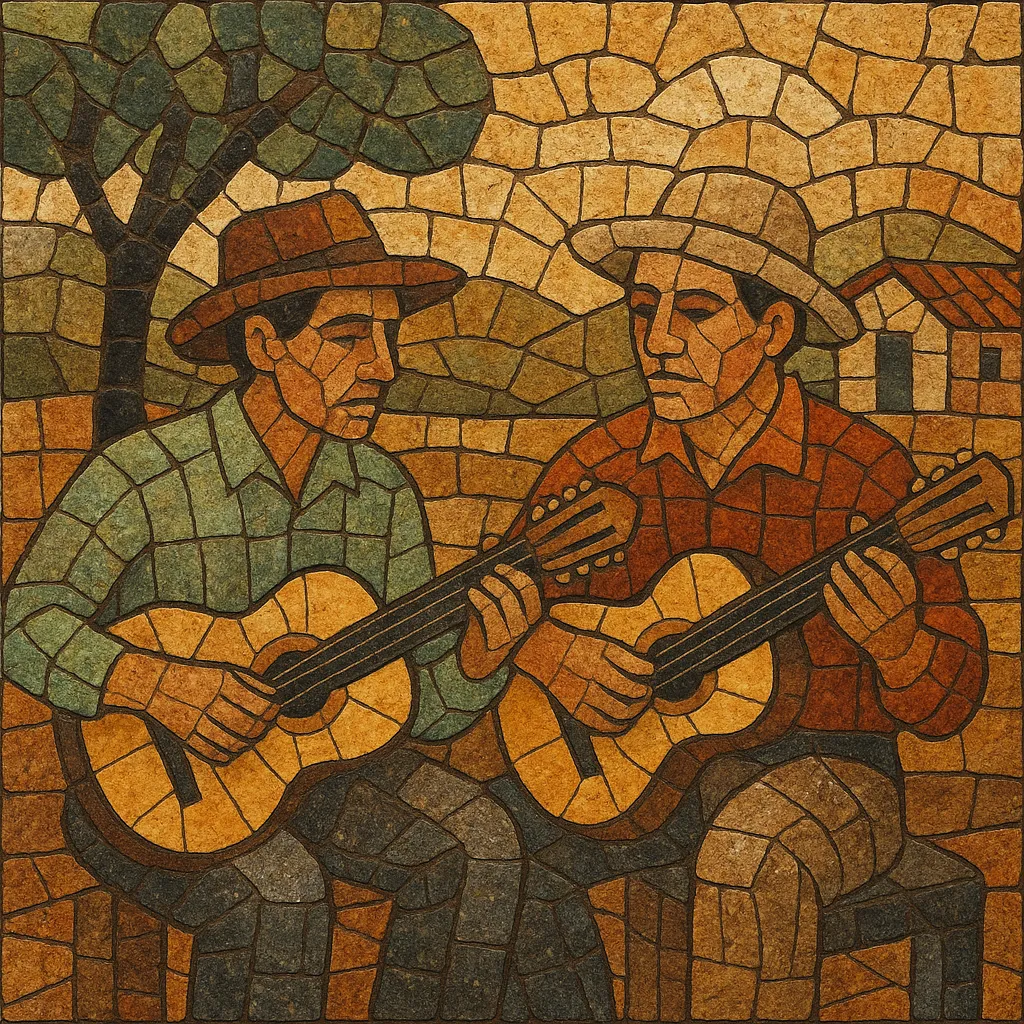Moda de viola is a traditional Brazilian rural song style centered on the viola caipira, a 10‑string double‑coursed guitar. It is typically performed by vocal duos (duplas), singing in close parallel harmony—often in thirds—over arpeggiated or gently strummed viola accompaniments. The songs are narrative and reflective, evoking countryside life, devotion, love, longing (saudade), and moral tales.
Tempos are generally slow to medium, with 2/4, 3/4, or 6/8 feels, and harmonies remain largely diatonic, prioritizing expressive melody and storytelling over harmonic complexity. While it overlaps with broader sertanejo traditions, moda de viola preserves an older, acoustic, and pastoral aesthetic tied to Brazil’s interior.
The term moda in Portuguese historically referred to a “tune” or “song,” and Brazilian rural communities adapted Iberian song and ballad practices into what became moda de viola. The viola caipira, with its open tunings and resonant double courses, became the core instrument for storytelling in the Brazilian countryside, especially in the Southeast and Center‑West.
With the expansion of radio and the early recording industry, vocal duos from rural areas brought moda de viola into urban awareness. By the 1940s and 1950s, duplas such as Tonico & Tinoco crystallized the sound: close two‑part harmony, narrative text, and viola caipira accompaniment. This period established the genre’s canonical repertoire and performance practices.
As modernized strands of sertanejo gained prominence, moda de viola retained a dedicated audience and cultural prestige. Television programs (notably Inezita Barroso’s “Viola, Minha Viola”) and regional festivals preserved and celebrated traditional performance. Artists like Tião Carreiro & Pardinho and Pena Branca & Xavantinho upheld and refreshed the tradition, while virtuosos such as Almir Sater introduced the viola to broader audiences.
In the 21st century, moda de viola persists through festivals, educational projects, and recordings that emphasize authenticity and craftsmanship. While contemporary sertanejo styles have moved toward pop production, many performers continue to cultivate moda de viola’s acoustic, intimate sound and its role as a vehicle for rural memory and identity.


